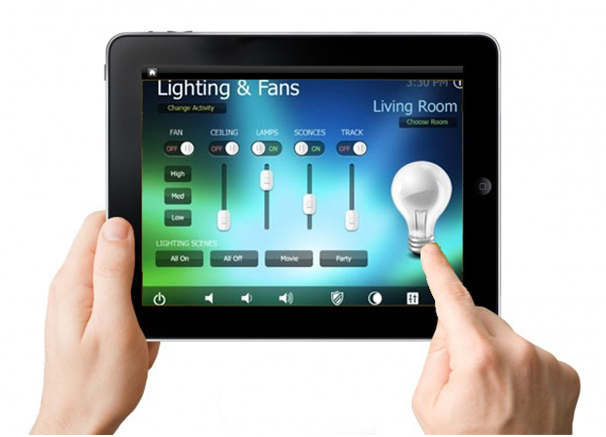 In today’s world where energy management and conservation is a talked subject and smartphones are reshaping our lives, “Smart Home Lighting System” is one such area which is gaining lot of attraction in lighting industry. Major advancement in this field is “Bluetooth Low Energy” for connectivity and remote control. Bluetooth Low Energy (BLE) is seen as a promising technology for Smart Home Automation and Lighting. It is upward version of classic Bluetooth and works in same 2.4 GHz radio frequency band. One feature that is more prominent in BLE compared with classic Bluetooth is the reduced power consumption which makes it suitable for LED lighting segment.
In today’s world where energy management and conservation is a talked subject and smartphones are reshaping our lives, “Smart Home Lighting System” is one such area which is gaining lot of attraction in lighting industry. Major advancement in this field is “Bluetooth Low Energy” for connectivity and remote control. Bluetooth Low Energy (BLE) is seen as a promising technology for Smart Home Automation and Lighting. It is upward version of classic Bluetooth and works in same 2.4 GHz radio frequency band. One feature that is more prominent in BLE compared with classic Bluetooth is the reduced power consumption which makes it suitable for LED lighting segment.
For high efficiency, long lifetime, better light quality and reliability, LED is already a winner in lighting technology. Adding smartness to LED light further boost its superiority. Selective turn on/turn off and brightness control results in increased system life and reduced energy consumption. As input is from AC source and LED is a constant current DC load, power quality is another major area of concern for LED lighting which need to be taken care. The recommended harmonic norms IEC61000-3-2 Class C, EMI limits (CISPR 15) and Energy Star (standby consumption) are also imposed for LED lighting. So diode bridge rectifier followed by bulk capacitor in not recommended for power of LED lighting. The proposed smart LED driver is taking care of all of the issues.
This article will discuss a Smart Home Light based on a monolithic, offline LED driver and a BLE module which is controlled by an Android application. This smart home lighting system passes all the existing recommended norms of regulatory authority. In addition, it has very low standby consumption. The following Fig.1 shows the architecture block diagram of the BLE based Smart Home Lighting System.
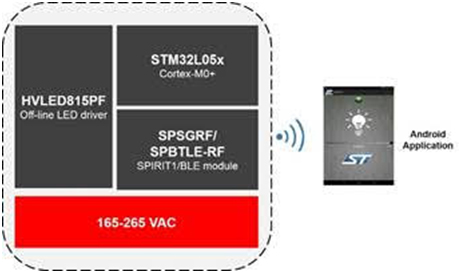
Fig.2 shows the actual hardware of the Smart Home Lighting System for the development of ready to manufacture solution. This system implementation, has three major aspects, LED driver power supply, microcontroller unit and the Android application for user control. The LED driver is based on offline AC-DC converter working on quasi resonant flyback mode with high power factor (PF) and low total harmonic distortion (THD). Power conversion is based on HVLED815PF, monolithic off-line primary sensing constant current LED driver. For low cost and low power applications, it is an ideal candidate as primary side regulation does not need optocoupler for LED current feedback. It helps in saving cost as well as PCB area. It meets the IEC61000-3-2 Class C harmonic norms recommended by International Electrotechnical Commission (IEC) for lighting system. The LED driver has a high efficiency of >84% for entire EU range and has very low standby power consumption (<0.5W). Although dedicated pulse width modulation (PWM) dimming dedicated pin is not available on HVLED815PF IC but PWM dimming become possible in this design. The depth of dimming at 2.5% level of output power. The board communicates with utility even at switch OFF condition thanks to the offline auxiliary power supply design which works even in LED OFF condition. The SPBTLE-RF (Bluetooth Low Energy, v4.1, network processor module with integrated RF section and FCC certified) and STM32L051 (ultra-low power Microcontroller) takes care of the connectivity and features such as remote control, ON and OFF with the help of Android application. There are several other features like including multiple board control using single interface. For a typical home, installed with several LED light fixtures, it is a precedent to save on electricity bills with added luxury. Table 1 shows the specification of smart home lighting system and Figs.3-8 show the test results of the LED driver.
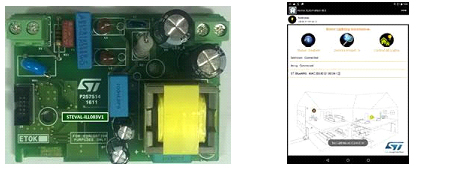
Table 1: Specification of smart home lighting system
| Parameter | Value |
| Input Voltage | 185VAC -275VAC, 50Hz |
| PF | >0.95 |
| THD | <20% |
| Current Regulation | <±1% |
| Efficiency | >84% |
| Dimming | ≤2.5% |
| Power Rating Output | 12W |
| LED Load | 32V, 330mA |
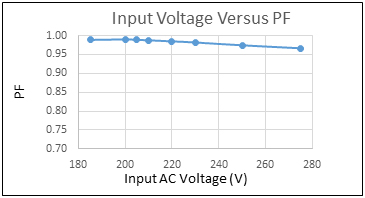
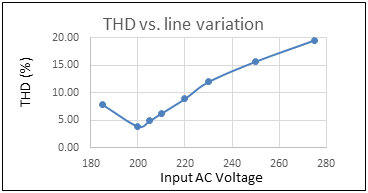
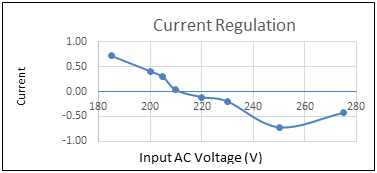
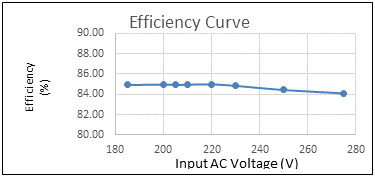
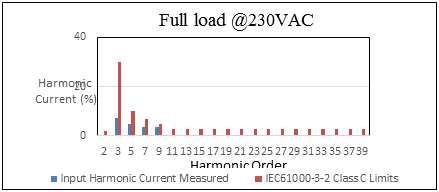
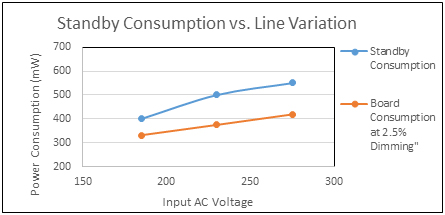
Android Application Demonstration
As discussed above, there is a dedicated Android Application. The Application runs on the Smartphones having BLE. The applications allows the user to select the light appliances and drag and drop on the screen. Traditionally there was only one master slave BLE connection supported by the Android Smartphone. This means that a user can control only one BLE based light with the use of Smartphone. After the introduction of Android 5.0 Lollipop, the operating system along with the corresponding hardware started supporting maximum of 7 master slave BLE connection. This means that for a small home we would be able to control 7 independent BLE based home appliances such as lights, fans which a good selling point for the manufacturer. The Android Application that we developed for our BLE based lighting design allows 7 connections at the same time. Google Nexus 9 is one of the tablet which supports the multiple connections and this feature may vary from the mobile set manufacturer. The Fig.9 below shows the image of the Android Application with the Smart Lights. As discussed earlier all the above LED lights has the BLE connectivity support in the hardware. The Android Application allows the user select the Smart Light, Bulb or Lamp from the choice as shown Fig.10 and drag and drop the Smart Lights on the Layout of the home. On the Android Application side the user needs to made individual connection with each LED lights. Once the connection is established, the user is able to control each of the lights.
Smartphone with different connectivity technologies support has opened a plethora of use-case in different segments, be it Home Automation to Smart Cities. With the cost of the mobile phones going down and new standards coming on the connecitivity technologies that are part of the mobile phone, Home automation will have lot of use-case and Smart Lighting is one of the need or use case of Smart Home Automation. Smart Lighting gives user the flexibility to the user to control the lights using mobile phone and also helps to reduce power consumption.
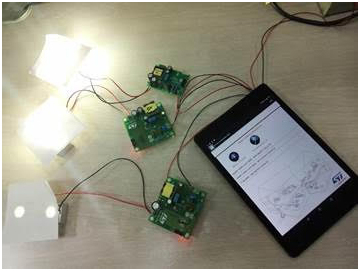
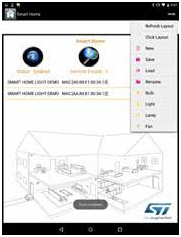
Smart Home Light system is applicable for smart homes and places where mood lighting and frequent control is required. Variation in the LED varies lighting experience. Combination of such lights with integrated control provides a lighting solution for better user experience. Small PCB size and the Android application enhances the usability and adoption of Smart Home Light in the lifestyle segment.
Authors
- Jitendra Jain: Technical Leader, AMG Central Lab, STMicroelectronics India
- Raunaque QUAISER : Senior Manager, AMG Central Lab, STMicroelectronics India
- Aman JHA : Senior Staff Engineer, AMG Central Lab, STMicroelectronics India
- Ranajay MALLIK : Group Manager, AMG Central Lab, STMicroelectronics India






